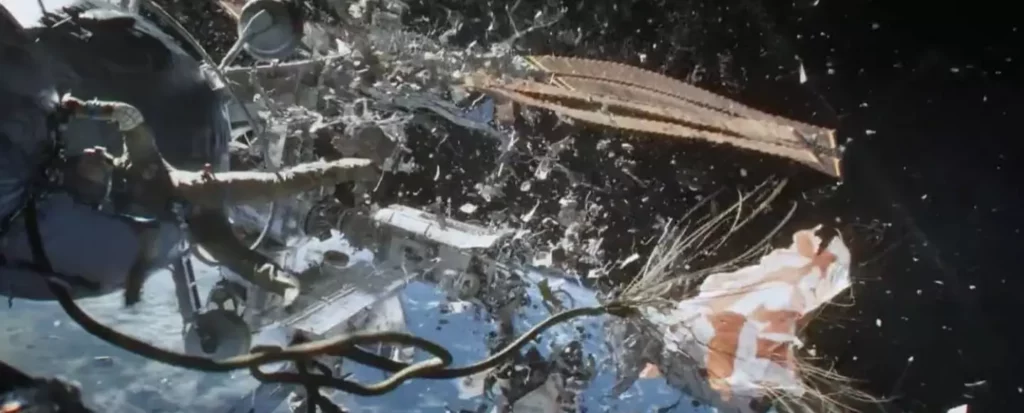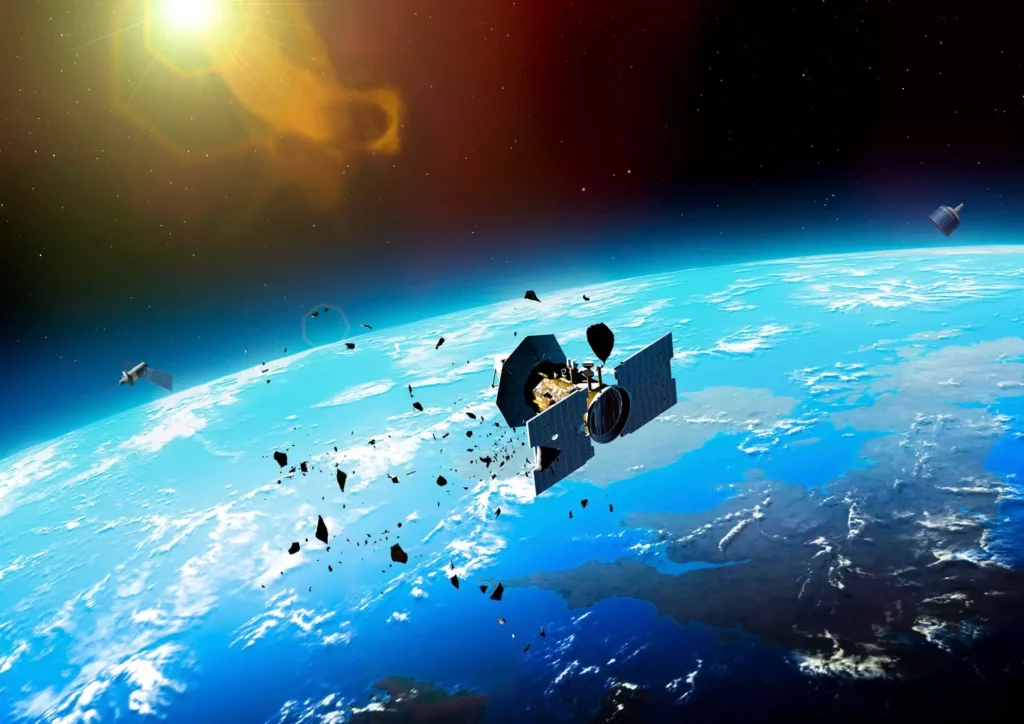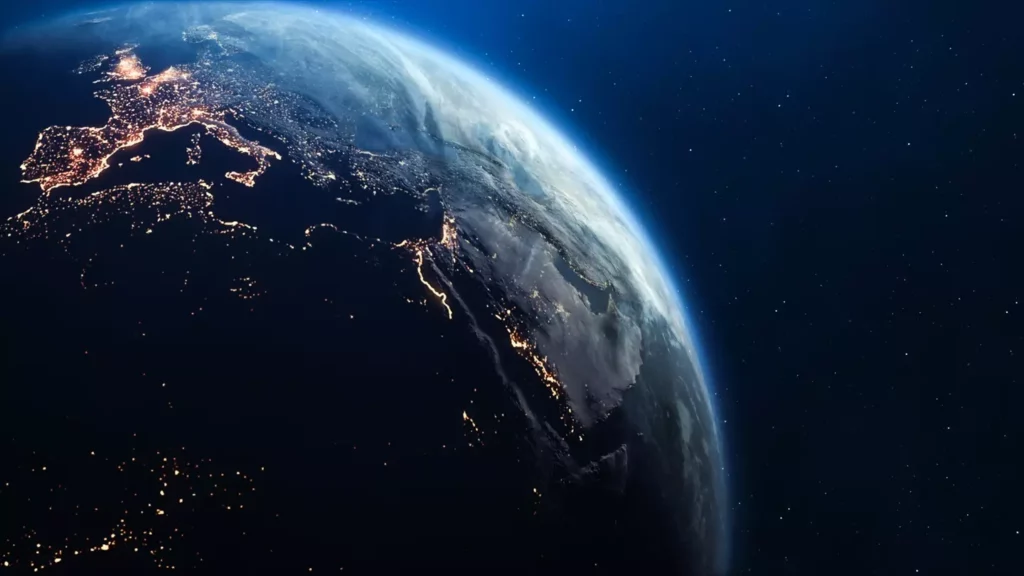Millions of us have watched the thrilling blockbuster Gravity, featuring Sandra Bullock and George Clooney, who find themselves stranded in space after a catastrophic failure during their mission to the Hubble Space Telescope.
The film’s premise, where everything goes horribly wrong, is actually a dramatic interpretation of a scenario that is considered a real possibility in the world of space exploration.
The film tracks Bullock and Clooney as they work on repairing the Hubble Space Telescope when they receive an urgent warning from Mission Control in Houston. A downed spy satellite has created a debris field orbiting Earth, heading straight for them.
What follows is a catastrophic domino effect: the debris knocks out communication satellites, destroys Hubble, and eventually damages the International Space Station (ISS). This scenario introduces the concept of Kessler syndrome, which scientists warn is a genuine risk as the space race intensifies, driven by figures like Elon Musk and his SpaceX company.
What is the Kessler syndrome?
Humanity has been exploring space for over half a century, drawn to the great unknown that we are compelled to understand.
However, this endeavor is fraught with challenges. In 1978, NASA scientists Donald Kessler and Burton Cour-Palais proposed a potentially troubling scenario. They theorized that if we continue launching an increasing number of spacecraft into the cosmos, we risk creating a crowded environment around Earth, significantly raising the chances of collisions.
“Spent rockets, satellites, and other space debris have accumulated in orbit, raising the likelihood of collisions with other objects,” NASA explains.
“Unfortunately, these collisions generate even more debris, resulting in a runaway chain reaction of collisions and additional debris, a phenomenon known as Kessler Syndrome, named after the scientist who first proposed this issue, Donald Kessler.”

Why scientists are worried the Kessler syndrome will be proved true?
Some experts are convinced that it’s only a matter of time before Kessler Syndrome becomes a reality.
John L. Crassidis, a professor of innovation and space debris expert at the University at Buffalo, New York, stated, “The Kessler syndrome is going to come true. If the probability of a collision becomes so high that we can’t safely launch satellites into space, then we’re in serious trouble.”
Currently, over 10,000 satellites are orbiting Earth, and in addition, there are more than 100 trillion pieces of old satellite debris still circling the planet. Some of these fragments occasionally re-enter the Earth’s atmosphere and burn up over time.
Kessler showed that once the amount of debris in a specific orbit reaches a threshold known as “critical mass,” collisions can occur, even if no additional objects are launched into that orbit.
“Once collisional cascading begins, the risk to satellites and spacecraft increases until the orbit becomes unusable,” NASA warns.
Kessler estimated that it would take 30 to 40 years to reach this critical point. However, many experts now believe we may have already reached critical mass in low-Earth orbit, which is approximately 560 to 620 miles (900 to 1,000 kilometers) above the Earth.
Notable incidents in recent years include a deactivated Russian satellite colliding with a U.S. satellite in 2009, and in 2021, a Russian missile test that destroyed one of its own satellites forced astronauts on the ISS to execute emergency procedures.

Why the Kessler syndrome could end life as we know it on Earth
If satellites and space debris trigger a chain reaction of collisions, it could spell disaster for life as we know it.
The loss of satellites would lead to significant internet and Wi-Fi outages, leaving phones unable to connect as they rely on these satellites for call functions. Additionally, we could face the potential loss of television broadcasts and GPS services.
On a broader scale, the destruction of weather satellites could severely hinder our ability to monitor and respond to weather conditions, affecting numerous industries.
“Weather satellites play a crucial role in various sectors, including agriculture, fisheries, and transportation, by predicting and mitigating the impacts of adverse weather,” explain Amrith Mariappan and John L. Crassidis in their 2023 paper, Kessler’s Syndrome: A Challenge to Humanity.
They further elaborate, stating: “Remote sensing satellites make significant contributions to resource exploration and the monitoring of phenomena such as floods, droughts, soil moisture, wildfires, vegetation health, forest degradation, and road infrastructure surveillance. In the military, remote sensing satellites are utilized to capture high-resolution images of strategic locations, monitor enemy activities, and assess potential threats.”
The paper also highlights that this situation could devastate healthcare by taking medical devices offline.
The critical issue arises if we reach what Kessler referred to as the “critical mass” stage. At that point, sending anything into space becomes too perilous due to the existing chain reaction of debris traveling at immense speeds around the planet.

How to stop the Kessler syndrome
Mariappan and Crassidis suggest that “recycling space debris presents a promising and sustainable long-term solution for mitigating the issue of space debris.”
In contrast, some opt for a short-term approach by de-orbiting waste to allow it to burn up in Earth’s atmosphere.
Although this method can address immediate threats, it carries significant risks and raises environmental concerns, including the potential depletion of the ozone layer.
Mariappan and Crassidis emphasize that “repurposing decommissioned satellites and debris into valuable materials for other space missions creates a win-win scenario, enhancing both environmental sustainability and resource efficiency in space exploration.”
The European Space Agency aims to achieve ‘debris neutrality’ by 2030, meaning it intends to add zero net debris to the Earth’s orbital environment. Additionally, it has set a broader goal of reusing components by 2050.
It remains to be seen whether humanity will reach a point where we can prevent Kessler syndrome from becoming a reality. While efforts are underway to address the issue, all we can do is hope that these measures will be sufficient.





